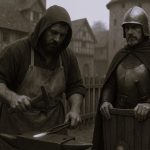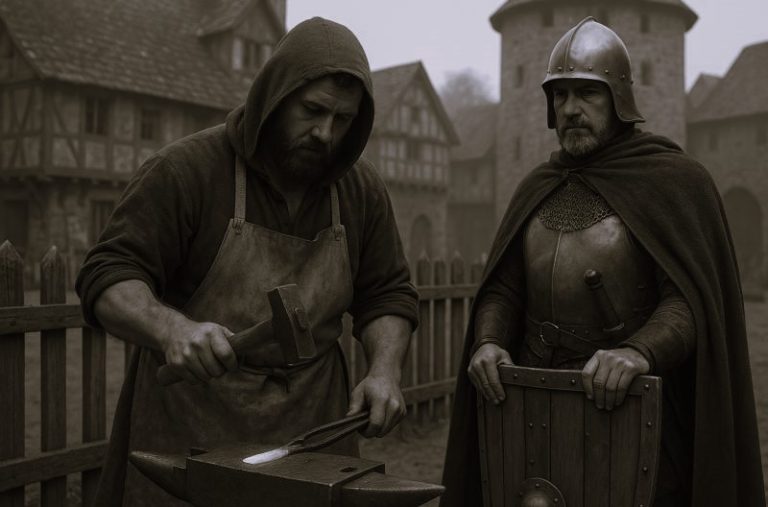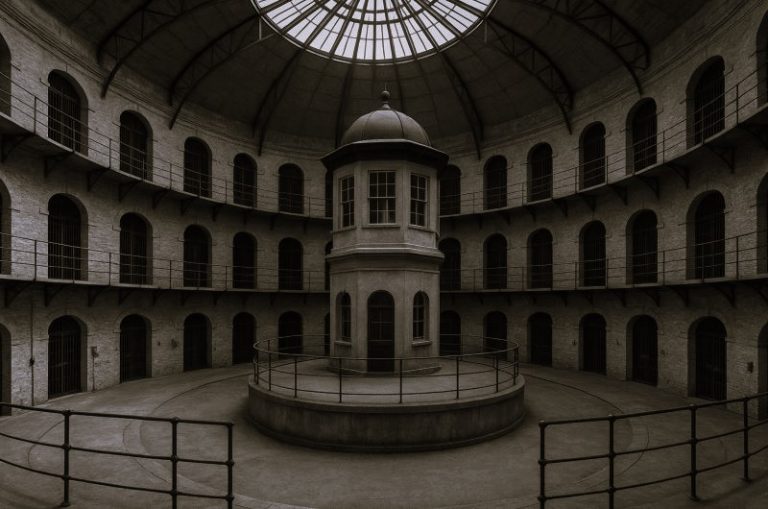

Introduction
West African cultures are quite diverse. Many groups of people, each with its own language and ways of life, have lived in the region of West Africa. From poems and stories to music and visual arts, their cultural achievements have left a lasting mark on the world.
Much of West African culture has been passed down through its oral traditions. Think for a moment of the oral traditions in your own culture. When you were younger, did you learn nursery rhymes from your family or friends? How about sayings such as “A penny saved is a penny earned”? Did you hear stories about your grandparents or more distant ancestors? You can probably think of many ideas that were passed down orally from one generation to the next.
Suppose that your community depends on you to remember its oral traditions so they will never be forgotten. You memorize stories, sayings, and the history of your city or town. You know about the first people who lived there. You know how the community grew, and which teams have won sports championships. On special occasions, you share your knowledge through stories and songs. You are a living library of your community’s history and traditions.
In parts of West Africa, there are people whose job it is to preserve oral traditions and history in this way. They are talented poet-musicians. For many centuries, they have helped to preserve West Africa’s history and cultural legacy.
Here you will learn about the role of both oral traditions and written traditions in West Africa. You will also explore West African music and visual arts. Along the way, you will see how the cultural achievements of West Africans continue to influence our world.
Music and Dance
Overview
Music has always been an important part of life in West Africa. Music serves many functions in West African society. It communicates ideas, values, and feelings. It celebrates historic events and important occasions in people’s lives. For instance, there are songs for weddings, funerals, and ceremonies honoring ancestors. Among the Yoruba of present-day Nigeria, mothers of twins have their own special songs. In Ghana, there are songs for celebrating the loss of a child’s first tooth.
The musical traditions of West Africa continue to influence both African and world culture. Let’s look at some key aspects of West African music.
Call and Response
A common style of music in West Africa is known as call and response. In call-and-response singing, a leader plays or sings a short phrase, known as a call. Then a group of people, the chorus, answer by playing or singing a short phrase, the response. The leader and chorus repeat this pattern over and over as they perform the song.
Enslaved Africans brought call-and-response songs to the Americas. Slaves used the songs to ease the burden of hard work, celebrate social occasions, and express outrage at their situation. This African tradition has influenced many American musical styles, including gospel, jazz, blues, rock and roll, and rap.
Musical Instruments

Traditional musical instruments in West Africa include three that have been used by griots for centuries. They are called the balafon (BAH-la-fon), the ngoni (en-GOH-nee), and the kora (KOR-ah).
The balafon probably was the original griot instrument. Like a xylophone or marimba, a balafon is made of wooden bars laid across a frame. The musician strikes the bars with a mallet, or hammer, to make melodies. The balafon is used today in popular music in modern Guinea.
The ngoni is a small stringed instrument. It is made of hollowed-out wood carved in a shape similar to a canoe. The instrument’s strings are made of thin fishing line. The ngoni is the most popular traditional stringed instrument in Mali today.
The kora is a harplike instrument with 21 strings. The body of the kora is made of a gourd that has been cut in half and covered with cow-hide. The kora’s strings, like those of the ngoni, are made of fishing line.
People around the world have been introduced to kora music by West African musicians. Some modern musicians in West Africa combine the sounds of the kora with electronic music.
Drumming

Drums play an important role in West African culture. Drummers perform at parties, religious meetings, and ceremonies, such as weddings and funerals.
West African drums are made of hollowed-out logs or pieces of wood. The drums are covered with animal skins.
Drummers in West Africa play in ensembles, or groups. The ensembles include different types and sizes of drums, along with bells and rattles. Drumming, singing, and dancing take place together in a circle. Sometimes, drum ensembles use a call-and-response style.
West African slaves brought their drumming traditions to the Americas. Over time, West African drum music evolved into new styles, particularly in Cuba. West African drum music and Afro- Cuban drumming are now popular elements of world music.
Dance
In West Africa, dance is as much a part of life as singing and drumming are. Traditional West African dances are still performed in Africa and around the world.
West Africans perform dances for all kinds of occasions. They dance during rituals and during ceremonies that mark important events in people’s lives. Dances can celebrate a success at work or help educate children. West Africans also perform dances to seek the help of spirits and to connect with dead ancestors.
Dance movements often reflect the conditions people live in. Among forest-dwelling people, for example, dancers move as if they are finding their way through forest undergrowth.
Some dancers wear elaborate masks that represent the spirits of traditional West African religion. For example, to ask the spirits for good hunting for their community, dancers may wear masks of wild animals and imitate their movements.
Oral and Written Traditions
Overview
For centuries, the beliefs, values, and knowledge of West Africans were transmitted orally from one generation to the next. In medieval times, written traditions also became important. In this section, we will look at the oral traditions and written traditions of West Africa.
Griots: Record Keepers of the People

A griot (GREE-oh) is a verbal artist of the Mande people. Griots are poet-musicians who tell stories, sing songs of praise, and recite poems, often while playing a drum or stringed instrument. They perform music, dance, and drama. But griots are much more than skilled entertainers. They also educate their audiences with historical accounts and genealogies, or histories of people’s ancestry. In many ways, they are the record keepers and historians of their people.
Long before the Mande had written histories, griots preserved the memory of the past. Every village had its own griot. The griot memorized all the important events that occurred there. Griots could recite everything from births, deaths, and marriages, to battles, hunts, and the successions of kings. Some griots could tell the ancestry of every villager, going back centuries. Griots were known to speak for hours and, sometimes, even for days.
This rich oral tradition passed from griot to griot. Rulers relied on griots as their trusted advisors. They used the griots’ knowledge of history to shed light on their current problems.
The most cherished information in griot history is the story of Sundjata Keita (soon-JAHT-ah KAY-tah). Sundjata was the king who founded Mali’s empire in the 13th century. Griot stories were told about him even in his own lifetime. Sundjata remains a hero to many West Africans, who still tell tales about him.
The art of the griots remains alive today. Some of the most famous artists in West African popular music are griots. These artists have changed traditional oral works into modern songs. Poets and storytellers make recordings and appear on radio broadcasts performing both old and new works.
Folktales

West Africa’s oral tradition includes hundreds of old stories called folktales. West Africans used folktales to pass along their history and to teach young people morals and values.
Many traditional folktales were brought to the Americas by West Africans who were sold into slavery beginning in the 1500s. The tales were spread orally among the enslaved Africans and their descendants. The folktales became part of the culture of North and South America and the West Indies.
One example is a type of folktale known as a “trickster tale.” These stories tell of a clever animal or human who outsmarts others. Trickster tales are popular in many cultures. In West Africa, one famous trickster was the hare. West Africans brought tales of the hare to America, where he became known as Brer Rabbit. In the 19th century, a writer named Joel Chandler Harris retold a number of African American stories about Brer Rabbit. These stories have since been woven into American culture.
Proverbs
West African oral tradition includes proverbs, or popular sayings. Proverbs are found in all cultures. West African proverbs use images from everyday life to express ideas or give advice. They tell us a great deal about the wisdom and values of West Africans.
One proverb shows how Africans valued their stories. The proverb states, “A good story is like a garden carried in the pocket.” Another shows the importance of oral tradition. “Every time an old man dies,” the proverb says, “it is as if a library has burnt down.” Enslaved West Africans brought proverbs like these to the Americas.
Written Tradition

After Islam spread to West Africa, written tradition became more important. Muslims published many works in Arabic. A number of these writings were preserved in mosques and Qur’anic schools. Today, they are a key source of information about West African history, legends, and culture.
Modern writers in West Africa are adding to the literary legacy of the region. Some of them have turned ancient oral traditions into novels and other works.
Youssou N’Dour: A Modern-Day Griot
Overview

Rolling Stone magazine celebrated him as “perhaps the most famous singer alive. “Folk Roots magazine named him African artist of the century. For over 30 years, Senegalese singer Youssou N’Dour has made hit albums and performed around the world. N’Dour is a modern–day griot. His songs awaken the world to the problems African nations face.
Youssou N’Dour, Senegal’s greatest recording artist, sat in his studio in Dakar. He started picking out a series of notes on the keyboard. His guitar player grabbed his guitar and started strumming chords. Then the drummer sat down behind his kit and laid down a rhythm.
N’Dour began to sing in his clear, strong tenor voice. He improvised the lyrics, making them up as he went along. Little by little, the song developed. It was about the tough life of a fisherman. It told how he rose before dawn and went out to sea, but all he caught was a shark. He brought the shark to market, but no one would buy it. The fisherman hoped his luck would change the next day. When N’Dour finished singing, he had just created his newest song. Like so many of his songs, it captured how ordinary people in his native country of Senegal struggle every day to make ends meet.
A Singer Who Tells the Truth

Youssou N’Dour was born in the African nation of Senegal in 1959. He is that nation’s most celebrated musician and has been called one of the best African singers. He is also a modern–day griot.
In traditional West African cultures, griots passed along the history of their people through stories and songs. In the past, griots also communicated messages from a king to his people and told stories of the king’s triumphs. But griots also told the truth. Sometimes kings would get angry when the griots pointed out royal mistakes.
Telling the truth is one way in which Youssou N’Dour is a modern griot. In one of his songs, titled “Africa,” he criticizes the corruption of many of Africa’s political leaders. In another song, “Donkaasi Gi,” he calls for equality among the people of Senegal. When he sees people perform acts of kindness to one another, he celebrates them in song. A devout Muslim, he also has sung about modern Islamic life.
N’Dour’s albums have sold in the millions. He has worked with some of the most popular musicians in the world, including Peter Gabriel, Bruce Springsteen, Sting, Paul Simon, Tracy Chapman, and American jazz musician Branford Marsalis.
His songs have helped make people more aware of Africa’s challenges. But he also sings of Africa with hope and pride.
A Musical Background

N’Dour was born in Medina, a tough section of Dakar, the capital of Senegal. His mother was a griotte—a female griot. His grandparents were talented singers who were much in demand in Dakar.
Yet music also caused some conflict in his family. His father did not come from the griot tradition and forbade N’Dour’s mother to sing in public. He also opposed his son’s ambitions to be a musician and urged him to go to school and prepare for a more stable career. Yet when N’Dour showed extraordinary musical talent as a child, his mother and grandparents supported him.
N’Dour was lucky to grow up in Dakar during the 1960s and 1970s, because an amazing variety of music made its way there. He grew up listening not only to local and traditional musical styles, but also to African American artists such as Marvin Gaye, James Brown, Michael Jackson, and Jimi Hendrix. He also loved Latin American music. All these styles influenced him.
In 1973, when he was 14 years old, he sang in a talent contest—and won. Brimming with confidence, he went to see the manager of The Miami, a successful nightclub in Dakar, and asked to be hired as a singer. The manager initially turned him down. But N’Dour kept asking until the manager finally gave in. N’Dour became a singer for the Star Band, the best-known band in Dakar.
A New Style of Dance Music

The teenage N’Dour was a sensation. The young people of Dakar crowded into the club to dance and listen to his songs. With his silky voice, he expressed what they were feeling. In 1977, in a bold move, Youssou hired away six members of the Star Band for his own group, which he called Étoile de Dakar, French for “Star of Dakar.” In 1979, he formed the band Super Étoile de Dakar.
N’Dour and his band gradually developed a new style of dance music. Everybody called it mbalax (um-bah-lahks), which means “rhythm” in the Senegalese language Wolof. N’Dour and his band also added the sounds of hip-hop, rock, soul, and rhythm and blues to their music.
A Voice of Conscience
Soon N’Dour and Super Étoile de Dakar started to record albums, with N’Dour either writing the songs himself or co-writing them with his bandmates. From 1979 to 1988, they recorded an astonishing 14 albums, which merchants sold on the streets of Dakar. His popularity quickly exploded.
N’Dour was now famous throughout Senegal. For such a young man, he was making a lot of money. Yet he always stayed in touch with his roots. In the lyrics of his songs, he expressed his concern for the problems facing Africa, such as hunger, poverty, and disease. For example, in his song “New Africa,” which was released in the mid–1980s, he urged the people of the continent to work together. “Unity,” he wrote,” was the traditional strength of Africa.”
In other songs, he called for the people of Africa to care for one another, to choose good over evil, and to be honest in their dealings. One song encouraged the Senegalese to remember their roots and learn as much as they can about their country. In the album Nelson Mandela, N’Dour celebrated the courage of the South African civil rights leader who later became that nation’s first black president.
Keeping the Griot Tradition Alive

By singing about Africa’s issues, N’Dour keeps alive a griot tradition that has lasted for centuries. Griots are the voices of their communities. They pass along their people’s history from one generation to the next. They tell stories and sing songs that teach lessons so that young people can develop positive values. They make people feel as if they are part of a community.
Some griots have made extraordinary efforts to preserve West African traditions. In the nation of Gambia, the griot Alhaja Papa Susso founded a school where musicians, dancers, and poets can study griot traditions. They take lessons, rehearse, give concerts, make new friends, and exchange ideas. Scholars also visit the school to learn more about griots and their roles in African society.
In recent years, N’Dour has continued to sing about Africa. In a way, he has also become a griot to the world. One night during the mid–1980s, the British rock musician Peter Gabriel went to listen to N’Dour perform. When Gabriel heard the young singer, he was amazed. Gabriel asked N’Dour to sing on his album So, which became one of the best-selling albums of the 1980s. They also co–wrote the song “Shaking the Tree—Woman’s Day, ” a remarkable song about women’s rights in Africa. Since then, N’Dour has worked with many other musicians to raise money to improve conditions in Africa and around the world.
N’Dour and other modern–day griots are essential voices for the future of Africa. They point out problems, but they also help unify the continent. Most of all, they help Africans face the future with hope and pride.
Visual Arts
Overview
West African culture includes many forms of visual art. The traditional art of West Africa served a number of functions. Some art objects, such as fabrics and baskets, satisfied everyday needs. Others, such as masks and sculptures, were used in rituals and ceremonies, or to honor ancestors, spirits, or royalty.
Sculpture

West Africans of ancient and medieval times used religious sculptures to call upon the spirits to help them in every phase of life. They also used sculptures to honor their leaders.
A wealth of West African sculpture has been discovered in Nigeria. The oldest examples come from the Nok culture (500 B.C.E. to 200 C.E.). The Nok made terra-cotta sculptures of human figures. The sculptures tended to have long, narrow heads, unusual hair styles, and dramatic expressions. Scholars believe that they represented ancestors or mythical figures.
The Yoruba people of Ife (EE-fay), Nigeria, also made sculptures of terra-cotta. Later, they used bronze and copper. By the 11th century C.E., they were making brass sculptures of royalty. Later, they taught their neighbors in Benin (founded in 1100 C.E.) how to make brass sculptures. Benin artists produced sculptures in honor of the royal court. By the 16th century, they were making elaborate plaques that showed the king’s power and authority.
Masks

Wooden masks have been a part of West African life for centuries. Masks were worn during ceremonies, in performances, and in sacred rites. Like sculptures, they were used to bring the spirits of gods and ancestors into the present.
West African masks are detailed and expressive. They have inspired a number of artists around the world. Among these artists is Pablo Picasso, a world-famous Spanish painter of the 20th century.
Textiles

West Africans have a long tradition of making textiles that are both beautiful and symbolic. Three well-known types of West African textiles are stamped fabrics, story fabrics, and a particularly colorful kind called kente (KEN-tay) cloth.
West Africans make stamped fabric by drawing a grid on a piece of cloth, using a thick dye. They use stamps to fill in the squares with patterns. The stamps represent proverbs, historical figures, objects, plants, or animals.
Story fabrics depict events. For example, they might show kings performing great feats, like hunting lions. Some West Africans make story fabrics using a technique called appliqué. In appliqué, smaller pieces of fabric are attached to a larger, background piece to make designs or pictures.
Kente cloth is a famous West African textile. To make kente, people sew together narrow strips of silk or other fabrics. The designs of kente cloth have symbolic meanings that reflect the makers’ life or family history, values and beliefs, or political or social circumstances.
The influence of West African textiles can be seen in quilts made by African American slaves. Today, commercially made kente cloth is worn around the world.
Everyday Objects

West African visual arts also include the design and decoration of everyday objects. Skilled artists turn practical objects into things of beauty. Some examples are ceramic storage containers, utensils, furniture, and baskets.
In many parts of West Africa, baskets are made by the coil method. The basket maker winds fibers into coils and then uses strips of fiber to bind the coils together. Some of these baskets are so tightly constructed that they can hold water.
Enslaved West Africans brought their basket-making tradition to America and taught it to their descendants. This art is still practiced in the American South.
Originally published by Flores World History, free and open access, republished for educational, non-commercial purposes.






